The Well-Tempered Ear
The famed International Tchaikovsky Competition has been expelled from the World Federation of International Music Competitions
10 Comments
PLEASE HELP THE EAR. IF YOU LIKE A CERTAIN BLOG POST, SPREAD THE WORD. FORWARD A LINK TO IT OR, SHARE IT or TAG IT (not just “Like” it) ON FACEBOOK. Performers can use the extra exposure to draw potential audience members to an event. And you might even attract new readers and subscribers to the blog.
By Jacob Stockinger
One of the granddaddies of all international music competitions — probably the best known and most prestigious — has been disowned.
The International Tchaikovsky Competition — the one that catapulted the young American pianist and first winner Van Cliburn (below, during the competition) to worldwide fame during the height of the Cold War, for which he received the only ticker tape parade in New York City ever given to a musician — has been expelled from the World Federation of International Music Competitions, which was founded in 1957 and represents 110 music competitions and programs to help young musicians build a career.
The move comes in response to recent events in Ukraine — including alleged Russian war crimes during its brutal, deadly and unprovoked invasion.
The famed Tchaikovsky Competition — which started in 1958 and is now for pianists, violinists, cellists, vocalists as well as woodwind and brass players — is held in Moscow and St. Petersburg and is financed and organized by the Russian government. It has launched the careers on many great musicians.
It is co-chaired by the discredited Russian conductor Valery Gergiev (below right, in 2014), a close friend and avid supporter of Russian President Vladimir Putin (below left) and of the conflict in Ukraine.
The expulsion came about because the Tchaikovsky Competition refused to condemn the Russian invasion, as the federation requested.
Here is a link to the story that was published on the website Classical Music, an online publication of the BBC Music Magazine. It contains background on both the competition and the current state of affairs regarding Russian musicians and the Russian conflict in Ukraine. It has a lot of noteworthy links:
And here is the response from the organizers of the Russian competition, which takes place every four years. The 16th competition was held in 2019, and the 17th is still scheduled for 2023. (The announcement of the 2019 piano winners — by the Russian former piano winner Denis Matsuev, who has been boycotted because of Ukraine — is in the YouTube-Medici.TV video at the bottom.)
The response — which accuses the federation of “persecuting” Russian musicians and promises that it will be held as usual and remain open to contestants worldwide — is posted on the competition’s website:
https://tchaikovskycompetition.com/en/news/415.htm
It makes one wonder what the effects on the next Tchaikovsky competition will be.
Will potential jurors outside Russia boycott the competition?
Will non-Russian contestants — with the exception perhaps on Chinese and Belarusian performers — avoid participating?
And what will be the effect on the inaugural Rachmaninoff Competition for pianists, composers and conductors that is scheduled to take place this June in Moscow?
What do you think?
Is it the right call by the international federation?
Or the wrong call?
Why do you think so?
The Ear wants to hear.
Tags: #AnnaNetrebko, #ArmedConflict, #BBCMusicMagazine, #BestKnown, #BlogPost, #BlogPosting, #BrassMusic, #ChineseMusicians, #ColdWar, #DaniilTrifonov, #DenisMatsuev, #DublinIreland, #DublinPianoCompetition, #FacebookPost, #FacebookPosting, #GidonKremer, #InternationalTchaikovskyCompetition, #JacobStockinger, #NewYorkCity, #PeterIlyichTchaikovsky, #PianoConcerto, #RussianFederation, #SergeiRachmaninoff, #SergeiRachmaninov, #StringMusic, #TheEar, #UniversalMusic, #ValeryGergiev, #VanCliburn, #VictoriaMullova, #ViolinConcerto, #VladimirAshkenazy, #VladimirPutin, #VocalMusic, #WarCime, #WoodwindMusic, #WorldFederationofInternationalMusicCompeititions, #YouTubevideo, accuse, Anna Netrebko, announcement, armed conflict, Arts, audience, authoritarian, background, BBC, BBC Music Magazine, Belarus, Belarusian, best-known, blog, Blog post, blog posting, boycott, brass, brutal, build, career, cellist, Cello, China, Chinese, Classical music, classicalmusic, close, Cold War, composer, Concert, concerto, condemn, conductor, conflict, contestant, Daniil Trifonov, deadly, deffect, democracy, Democratic, Denis Matsuev, discredited, Dublin, Dublin Piano Competition, exception, expel, expulsion, Facebook, fame, federation, founded, friend, funance, Gidon Kremer, government, grandaddy, great, hear, International Tchai, International Tchaikovsky Competition, invasion, Jacob Stockinger, June, juror, jury, launch, link, medici.tv, Moscow, move, Music, Musician, New York City, next, now, online, Orchestra, parade, participate, persecute, pianists, Piano, Piano concerto, President, prize, program, publication, publish, Putin, Rachmaninoff, Rachmaninoff Competition, Rachmaninov, represent, response, right, Russia, Russian, Russian Federation, schedule, Sergei Rachmaninoff, Sergei Rachmaninov, share, sing, singer, Singing, St. Petersburg, story, string music, supporter, symphony, tag, Tchaikovsky, The Ear, think, Ukraine, Ukrainian, United States, Universal Music, Valery Gergiev, Victoria Mullova, video, Violin, Violin concerto, violin music, violinist, Vladimir Ashkenazy, Vladimir Putin, vocal music, war, war crime, Website, why, win, winner, Wisconsin, wonder, woodwind, world, World Federation of International Music Competitions, worldwide, wrong, year, young, YouTube
Classical music: The timing and political climate could not be more relevant for seeing the Madison Opera’s production of “Fellow Travelers” this Friday night and Sunday afternoon
3 Comments
PLEASE HELP THE EAR. IF YOU LIKE A CERTAIN BLOG POST, SPREAD THE WORD. FORWARD A LINK TO IT OR, SHARE IT or TAG IT (not just “Like” it) ON FACEBOOK. Performers can use the extra exposure to draw potential audience members to an event. And you might even attract new readers and subscribers to the blog.
By Jacob Stockinger
You might recall from a previous blog posting that this weekend, the Madison Opera will present its production of the 2016 opera “Fellow Travelers.”
(A preview from the Minnesota Opera’s production, which featured the same sets and many of the same singers at the Madison Opera’s production, can be seen in the YouTube video at the bottom.)
Performances are this Friday night, Feb. 7, at 8 p.m. and Sunday afternoon, Feb. 9, at 2:30 p.m. in the Capitol Theater of the Overture Center.
Here is a link to more background and details about American history, the production, the cast and tickets.
Today, all The Ear wants to do is to point out how timely this story about the “Lavender Scare” of purging and punishing gays during the Red Scare, anti-Communist witch hunt of McCarthyism in the late 1940s and 1950s.
The opera’s story is about a young man (below) who supports Republican Sen. Joseph McCarthy of Wisconsin and then finds himself romantically and sexually attracted to another man who works in the State Department, one of McCarthy’s favorite targets.
He then has to deal with hypocrisy, with the contradictions between his personal life and his political beliefs as he goes from being victimizer to victim.
The political climate for such a work exploring fear and prejudice couldn’t be more relevant .
A lot of the credit for that can go directly to President Donald Trump (below), the master of “Fake News.”
Trump is a right-wing fear-monger and name-smearer, constantly raging against “radical left-wing Democrats.” He has even called Sen. Bernie Sanders — a Democratic candidate for president — a “Communist,” even though Sanders describes himself as a democratic Socialist along the lines of Western European socialists.
It is also no secret that in addition to such unfair and insulting name-calling, Trump and his homophobic supporters – including Vice President Mike Pence and Christian Fundamentalists – are looking to roll back the civil rights and human rights of people who are lesbian, gay, bisexual, transgender and queer.
And they want to do so even at a time when an openly gay man who is married, Pete Buttigieg, is running for president and seems to have just won the Iowa caucuses.
Moreover, there is a direct link between McCarthyism and the homophobia of the Liar-in-Chief.
Remember that McCarthy’ lawyer was a closeted and self-hating gay man named Roy Cohn (below right, with McCarthy). There is some evidence that McCarthy himself was secretly homosexual too.
After the humiliating end of the Army-McCarthy hearings and the premature death of McCarthy, Cohn went into private practice in New York City.
And that is where Cohn became the lawyer – and a role model of thuggish public behavior — for a young real estate developer named Donald Trump (below left, with Roy Cohn).
Such partisan times as the present seem to call for and inspire didactic art – better called “message art.” The Ear hasn’t seen the opera yet, so he can’t say how well it fits the bill.
But at first glance, the opera sure seems to fit the times we live in and the personalities of many of those who determine such a disturbing political and social climate. As The Nation magazine put it, “Trumpism is the New McCarthyism.”
In short, the opera’s plot seems both pertinent and realistic, one that could take place in today’s Washington, D.C.
The Ear is anxious to find out more and to make up his own mind, including about the music to be sung by the cast and played by the Madison Symphony Orchestra under conductor John DeMain.
He also hopes many of you will see the opera, and then leave your reactions and comments here, be they positive or negative.
The Ear wants to hear.
Tags: #Anti-Communist, #Army-McCarthy, #BernieSanders, #BlogPost, #BlogPosting, #CapitolTheater, #ChristianFundamentalist, #ChristianReligion, #CivilRights, #FacebookPost, #FacebookPosting, #FakeNews, #FellowTravelers, #Fridaynight, #HomeWebsite, #HumanRights, #IowaCaucauses, #JacobStockinger, #JohnDeMain, #LavenderScare, #LGBTQrights, #LivingComposer, #MadisonOpera, #MadisonSymphonyOrchestra, #McCarthyEra, #MessageArt, #MIkePence, #MinnesotaOpera, #NewMusic, #NewYorkCity, #OperaPlot, #OvertureCenter, #PersonalLife, #PeteButtigieg, #PoliticalBeliefs, #PresidentDonaldTrump, #PresidentTrump, #RedScare, #RoleModel, #RoyCohn, #SociallyRelevant, #StateDepartment, #Sundayafternoon, #The1950s, #TheEar, #TheNation, #USArmy, #VicePresident, #VocalMusic, #WesternEurope, #WitchHunt, #YouTubevideo, 1940s, 1950s, American, anti-Communism, Army, Art, Arts, attract, audience, background, behavior, belief, Bernie Sanders, bisexual, blog, candidate, Capitol Theater, cast, choral music, Christian, Christian Fundamentalist, civil, civil rights, Classical music, climate, closeted, colleagues, comment, Communism, composer, Concert, conductor, contradiction, D.C., death, Democratic, describe, details, determine, didactic, didacticism, disturbing, do, Donald Trump, evidence, Facebook, fake news, fear, Fellow Travelers, forward, Friday night, fundamentalist, gay, heartings, homophobia, homosexual, Homosexuality, human, human rights, humiliation, hypocrisy, hypocritical, Iowa, Iowa caucuses, Jacob Stockinger, John DeMain, Lavender Scare, lawyer, left-wing, lesbian, LGBT rights, LGBTQ, liar, life, like, link, Living composer, Madison, Madison Opera, Madison Symphony Orchestra, magazine, man, married, McCarthyism, message, message art, Mike Pence, mind, Minnesota Opera, Music, name, name-calling, negative, new, New Music, New York City, online, open, opera, Orchestra, Overture Center, Overture Center for the Arts, partisan, People, performer, personal, personal life, personalities, personality, pertinent, Pete Buttigieg, plot, political beliefs, Politics, positive, possible, post, posting, practice, premature, President, President Donald Trump, President of the United States, President Trump, preview, private, production, public, punish, punishment, purge, queer, radical, reaction, realistic, recall, recognize, Red Scare, relevant, Republican, Republican Party, right, rights, role model, Romantic, Roy Cohn, see, self-hating, senator, sets, sex, share, singer, smear, social, socialist, State Department, story, sung, supporter, tag, The Ear, The Nation, thug, tickets, time, timely, today, transgender, Trump, Trumpism, U.S. Senator, unfair, United States, vice president, victim, victimizer, vocal music, want, Washington, Website, weekend, Western Europe, Western European, win, Wisconsin, witch hunt, works, young, YouTube
Classical music: The 10th anniversary concert of the Middleton Community Orchestra hit all the right notes – including a surprise of high beauty
3 Comments
IF YOU LIKE A CERTAIN BLOG POST, PLEASE SPREAD THE WORD. FORWARD A LINK TO IT OR, SHARE IT or TAG IT (not just “Like” it) ON FACEBOOK. Performers can use the extra exposure to draw potential audience members to an event. And you might even attract new readers and subscribers to the blog.
By Jacob Stockinger
Last Wednesday night at the Middleton Performing Arts Center, the mostly amateur but critically acclaimed Middleton Community Orchestra (below, in a photo by Brian Ruppert) celebrated its 10th anniversary.
The MCO hit all the right notes. And there were many of them, both big and small.
But perhaps the biggest one was also the quietest one.
It came during the repetition section near the end of the heart-rending slow movement of the Clarinet Concerto in A Major, K. 622, by Mozart.
The Ear knows the piece and considers it one of the most perfect compositions ever written. But suddenly he heard the familiar work in a fresh way and with a new appreciation, thanks to the talented guest soloist J.J. Koh, who is principal clarinet of the Madison Symphony Orchestra. (You can hear the slow movement in the YouTube video at the bottom.)
The movement was going beautifully when suddenly, Koh (below) brought the dynamics down to almost a whisper. It felt prayer-like, so quiet was the sound. Yet it was completely audible. The tone was rich and the notes on pitch, even though Koh sounded as if he were barely breathing. It was a heart-stopping, breathtaking moment of high beauty.
It takes a virtuoso to play that softly and that solidly at the same time. And Koh was backed up with the same subtlety by the fine accompaniment provided by the scaled-down orchestra under conductor Steve Kurr.
The sublime result was nothing short of haunting, a musical moment that The Ear will remember and cherish as long as he lives.
And he wasn’t alone. A complete silence fell over the appreciative audience as Koh and the MCO were playing, and at intermission it was what everybody was talking about and wondering at. You just had to be there. It was the kind of musical experience that makes a live performance so engaging and unforgettable.
That moment of communion between soloist and ensemble by itself was enough to tell you how very much the MCO, which improves with each performance, has accomplished in its first decade.
There were other noteworthy moments too.
Of course tributes had to be paid.
So the evening started off with some brief background and introductory words from the co-founders and co-artistic directors Larry Bevic and Mindy Taranto (below).
Then Middleton Mayor Gurdip Brar (below) came on stage to read his official 10th anniversary proclamation and to urge people to applaud. He proved a jovial, good-natured cheerleader for the large audience of “good neighbors” that included many children.
When the music finally arrived, conductor Kurr (below) raised the curtain with his own original 14-minute episodic composition celebrating the “Good Neighbor City” of Middleton. It proved a fitting work for the occasion that evoked both the Midwestern harmonies of Aaron Copland and the brassy film scores of John Williams.
After intermission, the full 90-member MCO under Kurr returned and turned in a performance of Antonin Dvorak’s popular “New World” Symphony that did them all proud.
The tempo was energetic with a strong, constant pulse that didn’t falter. As usual, the string and wind sections proved outstanding – and still seem to get better each time.
But the real star this time was the brass, whose prominent part in the Dvorak symphony is hard to play. Playing consistently on pitch and expressively – they were clearly well-rehearsed — the brass boosted the whole performance and raised it to a new level. Which is exactly what the anniversary concert demanded and received.
The Ear wasn’t alone in being impressed.
A professional musician visiting from San Francisco said simply: ”They are much better than our community orchestra.”
Is there better homage to pay to a 10th anniversary concert and to make listeners look forward to hearing more? If you aren’t going to MCO’s affordable and appealing concerts, you are only cheating yourself.
For more information about the complete season, including programs, performers, guest soloists and how to join or support the MCO, go to: http://middletoncommunityorchestra.org
If you went, what did you think of the opening anniversary concert?
Leave your opinions and good wishes in the comment section.
The Ear wants to hear.
Tags: #AaronCopland, #AmateurMusicians, #AntoninDvorak, #ArtisticDirector, #BlogPost, #BlogPosting, #BlogReview, #BrassSection, #ClarinetConcerto, #CommunityOrchestra, #Curtain-Raiser, #FacebookPost, #FacebookPosting, #FilmMusic, #GoodNeighborCity, #GoodWishes, #GurdipBrar, #HomeWebsite, #J.J.Koh, #JohnWilliams, #LarryBevic, #LiveMusic, #MadisonSymphonyOrchestra, #MiddletonCommunityOrchestra, #MiddletonPerformingArtsCenter, #MiddletonWisconsin, #MindyTaranto, #MovieMusic, #MovieSoundtrack, #MusicalMoment, #MusicAppreciation, #NewMusic, #NewWorldSymphony, #PrincipalClarinet, #PrinicpalPlayer, #RightNotes, #SanFrancisco, #SlowMovement, #SteveKurr, #StringSection, #TheEar, #TheMidwest, #TonalBeauty, #WindSection, #WolfgangAmadeusMozart, #YouTubevideo, Aaron Copland, accompaniment, accomplish, amateur, anniversary, Antonín Dvořák, applause, appreciation, appreciative, Artistic director, audible, audience, background, beautiful, beauty, big, blog, boost, brass, brass section, breath, breathing, California, cheerleader, cherish, children, clarinet, clarinet concerto, co-founder, comment, communion, community, community orchestra, Composition, concerto, conductor, constant, decade, Dvorak, dynamics, engaging, ensemble, episodic, expressive, Facebook, falter, familiar, Fanfare, film, film music, forward, founder, fresh, From the New World, good neighbor, Good Neighbor City, good wishes, good-natured, Gurdip Brar, haunting, hear, heart-stopping, high, hit, homage, home website, John Williams, join, jovial, K, kids, know, Kochel, Larry Bevic, like, link, listener, live, live music, Madison Symphony Orchestra, mayor, member, Middleton, Middleton Community Orchestra, Middleton Performing Arts Center, Midwest, Midwestern, Mindy Taranto, minute, moment, movie, Mozart, musical, musical moment, new, New Music, New World Symphony, notes, noteworthy, occasion, official, opinion, Orchestra, original, outstanding, People, perfect, performer, piece, pitch, play, popular, post, posting, prayer, principal, proclamation, program, prominent, Pulse, quiet, raise, reader, real, rehearse, remeber, repetition, rich, right, right notes, San Francisco, score, Season, section, share, silence, Slow movement, small, soft, solo, soloist, Sound, star, Steve Kurr, string, string section, stroing, sublime, subscriber, suddenly, support, symphony, tag, talent, talented, Tempo, The Ear, think, tone, tribute, unforgettable, urge, warning, way, Website, whisper, wind section, winds, Wolfgang Amadeus Mozart, words, work, written, years, you, YouTube
Classical music: UW countertenor Gerrod Pagenkopf returns to sing on Sunday night with Chanticleer. Here’s how he got there with the right teacher, hard work, good luck and a push from mom. Part 2 of 2
Leave a Comment
IF YOU LIKE A CERTAIN BLOG POST, PLEASE SPREAD THE WORD. FORWARD A LINK TO IT OR, SHARE IT or TAG IT (not just “Like” it) ON FACEBOOK. Performers can use the extra exposure to draw potential audience members to an event. And you might even attract new readers and subscribers to the blog.
By Jacob Stockinger
This coming Sunday night, Oct. 6, at 7:30 p.m. in the new Hamel Music Center, the a cappella singing group Chanticleer (below) will kick off the centennial anniversary celebration of the Concert Series at the Wisconsin Union Theater.
Tickets are $45 for the public; $40 for faculty staff and Union members; and $10 for students. For more information about the performers and the “Trade Winds” program, go to: https://union.wisc.edu/events-and-activities/event-calendar/event/chanticleer/
Among the 12 members of Chanticleer is Gerrod Pagenkopf, who is in his fifth year with the group as both a countertenor and the assistant music director.
For a biography of Pagenkopf, go to: https://www.chanticleer.org/gerrod-pagenkopf
Pagenkopf is a graduate of the UW-Madison. When he performed as a student, his high, clear countertenor voice was a new experience and made those of us who heard him sit bolt upright and take notice. “He is going places,” we said to each. And so he has.
But Pagenkopf’s story is not only about him. It is also about the rediscovery of countertenors, about the changing public acceptance of them, and about the challenges that young musicians often face in establishing a professional performing career.
So The Ear is offering a longer-than-usual, two-part interview with Pagenkopf (below).
Part 1 appeared yesterday. Here is a link: https://welltempered.wordpress.com/2019/09/30/classical-music-uws-first-countertenor-gerrod-pagenkopf-returns-to-perform-on-sunday-night-as-a-member-of-the-acclaimed-choral-group-chanticleer-heres-how-he-got-from-here-to-there/
Here is Part 2:
Back when you were a student here, were you the only countertenor at the School of Music? How did you find out you were a countertenor and pursue that training?
As I recall, I was the only countertenor — certainly the only one studying in the voice department. I had been studying as a tenor with Ilona Kombrink (below, in photo by UW-Madison News Service) for a few semesters, and it just didn’t seem as easy as it was supposed to.
I didn’t sound like other tenors in my studio or on recordings. I remember that a famous countertenor had just come out with an album of Handel arias, and, upon hearing it, I thought to myself, “I can sing like that!”
I asked Professor Kombrink about it, and she told me to learn “Cara Sposa” from Handel’s “Rinaldo” over the summer. When I came back in the fall, if it sounded legitimate she agreed I could pursue countertenor singing.
I remember that first lesson of the fall. After I sang this Handel aria for her, she sat back and mused in her sage-like manner, “Yes, this must needs be.”
I never looked back. I think I was on the early edge of the re-emergence of countertenors. Certainly there were countertenors working professionally, but there weren’t that many. There weren’t any other countertenors in Houston when I went to grad school, and even when I moved to Boston, there were only a handful of working countertenors.
Since then, how has the treatment of countertenors changed in the academic and professional worlds?
By the time I left Boston a few years ago, you couldn’t throw a stone without hitting a countertenor. We now see young countertenors winning major competitions and earning places in young artist programs around the country. The competition is fierce now.
I was lucky enough to be one of just a few fish in the pond, but now countertenors are everywhere—and a lot of them are really good! I also remember that there was a stigma so that it would be difficult to find a voice teacher who would teach countertenors.
A lot of pedagogy books by reputable technicians said that countertenors weren’t real — they just sing in falsetto, which isn’t a real voice. I was lucky that Professor Kombrink was willing to explore that with me. I think now that there are so many successful countertenors singing everywhere, I hope this antiquated view of the voice type has changed.
What would you like the public to know about the program you will perform here? Are you featured in certain pieces?
Our “Trade Winds” program explores several different aspects of the wayfaring sailor. They include Monteverdi madrigals about water and nature; a wonderful mass setting by a largely unknown century Portuguese composer, Filipe de Magalhaes; several charming folksongs from around the Pacific Rim; and even a few sea shanties.
It’s a varied program that includes repertoire from as early as the 15th century up to just a few months ago. One of Chanticleer’s missions is to further the art of live music through new compositions, and we’ve commissioned a fantastic young Chinese-American composer, Zhou Tian (below), to write a new multi-movement piece for us, entitled “Trade Winds,” from which our program also gets its title.
Lots of listeners are scared of “new music,” but Zhou has given us a gem. It’s easy to listen to, and I think listeners will instantly understand what it’s all about.
What are your plans for the future?
Personally, I can’t say that I have anything coming up. As wonderful as Chanticleer is, the job pretty much limits any amount of outside freelance work. (At the bottom, you can hear Chanticleer singing “Shenandoah,” its most popular YouTube video – and a piece with a prominent countertenor part — with well over 1.6 million hits.)
One of the truly fantastic parts of singing in Chanticleer (below, performing on stage) is all the places we travel to. We started off this season with a three-week tour of Europe, which was actually the ensemble’s third trip to Europe in 2019.
We love traveling around the U.S., and as I’ve said, traveling back to Madison is certainly the highlight for me. The Midwest is always a special place for us to sing, as several of our members are from this region.
We’re very excited to travel to Australia in June 2020. I think it’s Chanticleer’s first visit “Down Under.” We will also be going back to the studio in January to record a new album for release sometime later in 2020. We have lots of exciting events coming down the pipeline.
Is there something else you would like to say?
Prior to singing with Chanticleer, I had been living in Boston for almost eight years, pursuing professional singing as a freelance artist.
To make ends meet, I had been working at Starbucks, which I actually started doing when I still lived in Madison, and my gigging was getting lucrative enough that I eventually decided to take a leave of absence from slinging lattes.
While I was in Wisconsin on Christmas vacation, I received a message from Chanticleer’s music director, William Fred Scott, letting me know that there was an immediate vacancy in the ensemble, and would I be interested in singing for them.
I thought I was being spammed, so I didn’t respond, and continued to enjoy the bliss of spending the entirety of the holidays with my family.
When I eventually got back to Boston a few days later, another email arrived from Mr. Scott: “Did you get my email? We’d really like to hear from you.” Ok, how do I tell them I’m clearly NOT the countertenor they’re looking for?
Well, after much soul-searching, calling my mother (“Just do it!” she exclaimed), and figuring out the logistics of liquidating a one-bedroom apartment, I decided to run away and join the circus. It was a complete leap of faith, but I think I made the right decision.
Don’t give up on your dreams. Singing in Chanticleer was the first legitimate dream I remember having. Although my musical path took me in several other directions, that path eventually led me to where I am today, and I wouldn’t trade it for the world.
Tags: #ACappella, #ACappellaMusic, #BarabooWisconsin, #BaroqueOpera, #BlogPost, #BlogPosting, #ChoralMusic, #ClaudioMonteverdi, #CommissionedMusic, #CountertenorSinger, #DoIt, #DownUnder, #FacebookPost, #FacebookPosting, #FalsettoVoice, #FilipedeMagalhaes, #folksongs, #GeorgeFridericHandel, #GerrodPagenkopf, #GiveUp, #GraduateSchool, #HamelMusicCenter, #HandelOpera, #Hard Work, #HardWork, #HomeWebsite, #IlonaKombrink, #JustDoIt, #LeapofFaith, #LiveMusic, #MadisonWisconsin, #MusicDirector, #NewMusic, #OperaAria, #PacificRim, #PortugueseComposer, #RunAway, #SchoolofMusic, #SeaChanty, #SeaShanty, #StarbucksCoffee, #TenorSinger, #TheMidwest, #TheU.S., #UnitedStates, #UniversityofWisconsin-Madison, #VocalMusic, #WilliamFredScott, #WisconsinUnionTheater, #YoungMusicians, #YouTubevideo, #ZhouTian, 15th Century, 15thCentury, a cappella, absence, acceptance, accessible, agree, Album, American, anniversary, antiquated, apartment, aria, Arts, assistant, audience, Australia, Baroque, bedroom, biography, bliss, blog, books, Boston, career, celebration, centennial, challenge, challenges, Chanticleer, charming, Chinese, Chinese-American, choral music, Christmas, circus, Classical music, Claudio Monteverdi, coffee, commission, Competition, composer, Composition, Concert, concert series, countertenor, country, decision, direction, do it, down under, dream, Early music, easy, email, ensemble, Europe, event, exciting, Facebook, faculty, falsetto, Family, famous, fantastic, fierce, Filipe de Magalhaes, fish, folksong, forward, freelance, gem, George Frideric Handel, Gerrod Pagenkopf, gig, give up, graduate, Graduate School, Hamel Music Center, Handel, hard, hits, Holiday, Holidays, home website, hope, Houston, Ilona Kombrink, immediate, Jacob Stockinger, January, just do it, latte, leap of faith, learn, leave, legitimate, like, limit, link, liquidate, listen, listener, live music, lived, logistics, look, lucky, lucrative, Madison, madrigal, major, manner, member, message, Midwest, mission, mom, Monteverdi, Mother, movement, muse, Music, Music director, musical, myself, new, New Music, opera, outside, Pacific Rim, path, pedagogy, perform, performer, performing, piece, pipeline, pond, popular, Portuguese, post, posting, professional, program, public, real, Recordings, rediscovery, region, release, repertoire, repertory, reputable, respond, right, Rinaldo, run away, sage, sailor, scared, School of Music, sea, sea chanty, sea shanty, Season, share, Shenandoah, singer, Singing, soul, spam, staff\, Starbucks, stigma, Student, studio, study, summer, tag, Teacher, technician, tenor, thought, tickets, tour, trade, Trade Winds, TradeWinds, travel, treatment, U.S., understand, United States, University of Wisconsin-Madison School of Music, University of Wisconsin–Madison, unknown, UW, UW-Madison, vacancy, vacation, varied, view, vocal music, voice, wayfaring, Website, week, William Fred Scott, Wisconsin, Wisconsin Union Theater, wonderful, work, working, world, young, YouTube, Zhou Tian
Classical music: YOU MUST HEAR THIS – Ernest Bloch’s Nocturne No. 2 for piano trio
2 Comments
IF YOU LIKE A CERTAIN BLOG POST, PLEASE SPREAD THE WORD. FORWARD A LINK TO IT OR, SHARE IT or TAG IT (not just “Like” it) ON FACEBOOK. Performers can use the extra exposure to draw potential audience members to an event. And you might even attract new readers and subscribers to the blog.
By Jacob Stockinger
Suddenly, in August, you sense fall coming.
The Ear has noticed how the sun is setting sooner and rising later.
And it brought to mind a wonderful performance of a memorable and moving work he heard a couple of weeks ago at the last concert by The Willy Street Chamber Players with University of Wisconsin-Madison pianist Christopher Taylor (below).
In fact, the group says the program – which also included Jessie Montgomery’s “Voodoo Dolls” and the Piano Quintet No. 2 in A Major by Antonin Dvorak – drew a record-setting audience for the group that marked its fifth anniversary this July.
The piece of music in question is the Nocturne No. 2 – the slow and most quiet one — from Three Nocturnes for Piano Trio by Ernest Bloch (below).
It sounds right and feels right with the right touch of autumnal bittersweetness to the evocation of darkness.
Listen for yourself on YouTube (below) and let The Ear know if you like it and agree:
Tags: #AntoninDvorak, #BlogPost, #BlogPosting, #ChamberMusic, #ChristopherTaylor, #ErnestBloch, #FacebookPost, #FacebookPosting, #JessieMontgomery, #MeadWitterSchoolofMusic, #PianoQuintet, #PianoTrio, #SlowMovement, #TheEar, #UniversityofWisconsin-Madison, #VoodooDolls, #WillyStreetChamberPlayers, #YouTubevideo, agree, anniversary, Anton Dvorak, Antonín Dvořák, Arts, attendance, audience, Autumn, autumnal, bittersweetness, blog, cellist, Cello, Chamber music, Christopher Taylor, Classical music, classicalmusic, composer, Concert, darkness, dolls, Ernest Bloch, evocation, Facebook, fall, feel, forward, group, Jacob Stockinger, Jessie Montgomery, July, last, link, Madison, Mead Witter School of Music, memorable, moving, Music, nocturne, performer, Pianist, Piano, Piano Quintet, Piano Trio, piece, post, posting, question, quiet, quintet, record, record-setting, right, rising, setting, share, slow, Sound, sun, tag, The Ear, trio, United States, University of Wisconsin-Madison School of Music, University of Wisconsin–Madison, Violin, violinist, Voodoo, Voodoo Dolls, week, Willy Street Chamber Players, Wisconsin, wonderful, work, yourself, YouTube
Classical music: Meet UW-Madison bassoonist Marc Vallon who performs with the Willy Street Chamber Players on Friday night
2 Comments
IF YOU LIKE A CERTAIN BLOG POST, PLEASE SPREAD THE WORD. FORWARD A LINK TO IT OR, SHARE IT or TAG IT (not just “Like” it) ON FACEBOOK. Performers can use the extra exposure to draw potential audience members to an event. And you might even attract new readers and subscribers to the blog.
By Jacob Stockinger
Who is Marc Vallon (below, in a photo by James Gill)?
This week, he is the bassoonist who will perform Franz Danzi’s Quartet for Bassoon and Strings in D minor, Op. 40, No. 2 (ca. 1820), this coming Friday night, July 19, with the acclaimed Willy Street Chamber Players (below), who will also be joined by pianist Jason Kutz and violist Sharon Tenhundfeld..
(The concert is at 6 p.m. in Immanuel Lutheran Church, 1021 Spaight Street. The program includes: the Allegretto for Piano Trio by Ludwig van Beethoven (1812); “Dark Wood” by American composer Jennifer Higdon (2001); and the rarely heard String Quartet No. 1 (1948) by Argentinean composer Alberto Ginastera. Admission is $15.)
A native of France, Vallon is one of the busiest musicians in Madison. He teaches at the University of Wisconsin-Madison’s Mead Witter School of Music, where he also performs individually, with faculty and student colleagues, and as a member of the Wingra Wind Quintet. He also frequently performs and conducts Baroque music with the Madison Bach Musicians.
Vallon attended the Paris Conservatory, where he won first prizes in bassoon and chamber music, and also earned a philosopher degree at the Sorbonne or University of Paris.
A versatile musician, Vallon played with famed avant-garde French composer Pierre Boulez and for more than 20 years was the principal bassoon of the well-known Amsterdam Baroque Orchestra. He has also performed with major modern orchestras and conductors as well as with many period-instrument groups.
He gives master classes worldwide and also composes.
For a more extended and detailed biography, go to: https://www.music.wisc.edu/faculty/marc-vallon/
Vallon recently did an email Q&A interview with The Ear:
What drew you to the bassoon (below) over, say, the piano or singing, over strings, brass or other woodwinds?
I played the piano as young kid but was not very interested in the mechanics of it, even if I had a strong passion for music. It was the day that my piano teacher brought to my lesson a friend of his to do a bassoon demo that I found the right medium for my passion.
I started practicing like a maniac and knew by the age of 14 that I was going to be a professional bassoonist.
What would you like the public to know about the bassoon, perhaps about the challenges of playing it and about the repertoire for it?
The bassoon does not offer more challenges than other wind instruments, but it is safe to say that an absolute perfectionist person should probably not play it.
It is an instrument capable of true beauties, yet it has its own character. You don’t conquer it, you work with it like you would work with a wonderful but temperamental colleague.
Bassoonists sometimes complain that our solo repertoire is not as rich in masterpieces as the clarinet’s or the flute’s. True, but in its 350 years of existence, the bassoon has amassed enough wonderful music to keep us busy for several lifetimes.
What would you like to tell the public about the specific Bassoon Quartet by Franz Danzi that you will perform, and about Danzi and his music in general?
The bassoon and strings quartet became popular in the last decades of the 18th century, a trend that lasted well into the Romantic era.
Sadly, many of these quartets are basically show-off pieces for the bassoonist while the strings players have to suffer through some often very dull accompaniment parts.
I like this one by Danzi (below) because it features the strings on the same musical level as the bassoon, creating an enjoyable musical conversation rather than a cocky bassoon monologue. (You can hear that musical conversation in the opening movement of the Bassoon Quartet by Danzi in the YouTube video at the bottom.)
As a performer and conductor, you are well–known for championing baroque music as well as modern and contemporary music. Do you have a preference? Do they feed each other in your experience?
What I always have enjoyed about playing contemporary music is the possibility to work with living composers because I often realized how flexible they are with their own music and how much they like the performer’s input. They’re often ready to compromise and veer away from the strict notation.
The approach when playing composers from the past is actually very similar in the sense that we have to remember how approximate music notation is. Baroque composers are not here anymore obviously, but the 17th and 18th centuries sources tell us clearly how much flexibility we, modern performers, have in our approach to their music.
When it comes to music pre-1800, we basically have a sketch on our music stands. I always want to remember this. (Below is a manuscript page of a cantata by Johann Sebastian Bach.)
Do you have big projects coming up next season?
Always! I am putting together a contemporary program on March 27 in our new concert hall on campus. It is called ”Opening Statements” and will feature early works from major 20th-century composers.
On period instruments, I have Bach’s “Christmas Oratorio,” Mendelssohn’s “Elijah” and more Bach on my calendar.
Is there something else you would like to say?
A big Thank You to you, Jake, for being such a relentless and informed advocate of the Madison musical scene!
Tags: #17thCentury, #18thCentury, #19thCentury, #20thCentury, #AcademicCalendar, #AlbertoGinastera, #AmsterdamBaroqueOrchestra, #ArgentineanComposer, #BaroqueChamberMusic, #BaroqueMusic, #BassoonMusic, #BassoonQuartet, #BlogInterview, #BlogPost, #BlogPosting, #BrassMusic, #ChamberMusic, #ChoralMusic, #ChristianChurch, #ChristmasOratorio, #ClarinetMusic, #ConcertHall, #ContemporaryComposers, #ContemporaryMusic, #DarkWood, #EventsCalendar, #FacebookPost, #FacebookPosting, #FacultyMember, #FelixMendelssohn, #FirstPrize, #FluteMusic, #FranzDanzi, #Fridaynight, #HistoricallyInformedPerformancePractices, #ImmanuelLutheranChurch, #JasonKutz, #JenniferHigdon, #JohannSebastianBach, #LivingComposers, #LudwigVanBeethoven, #MadisonBachMusicians, #MarcVallon, #MeadWitterSchoolofMusic, #ModernMusic, #Musicfaculty, #MusicNotation, #OpeningStatement, #ParisConservatory, #PeriodInstrument, #PIanoTeacher, #PianoTrio, #PierreBoulez, #PopularMusic, #PracticingMusic, #PrincipalBassoon, #ProfessionalMusician, #RomanticEra, #RomanticMusic, #RomanticPeriod, #StringMusic, #StringQuartet, #ThankYou, #TheEar, #TheSorbonne, #UniversityofParis, #UniversityofWisconsin-Madison, #WillyStreetChamberPlayers, #WingraWindQuintet, #YouTubevideo, 17th century, 18th century, 19th century, 20th-century, 20th-century music, accompaniment, admission, advocate, age, Alberto Ginastera, always, Amsterdam Baroque Orchestra, approach, approximate, Argentina, Argentinean, Arts, audience, away, Bach, Baroque, Baroque music, Bassoon, bassoonist, beauties, beauty, Beethoven, biography, blog, brass, calendar, Campus, Cello, challenge, challenges, Chamber music, champion, choral music, Christian, Christmas Oratorio, church, clarinet, Classical music, classicalmusic, cocky, colleague, composer, compromise, Concert, concert hall, conduct, conductor, conquer, contemporary composer, contemporary music, conversation, dark, Dark Wood, decades, degree, demo, dull, early, Early music, Elijah, email, era, existence, Facebook, faculty, Felix Mendelssohn, first prize, flexible, flute, France, Franz Danzi, French, Friday, friend, historically informed performance practices, Immanuel Lutheran Church, informed, input, instrument, interview, Jacob Stockinger, Jazon Kutz, Jennifer Higdon, Johann Sebastian Bach, kid, knew, know, level, lifetime, like, link, living composers, Ludwig van Beethoven, Madison, Madison Bach Musicians, major, maniac, manuscript, Marc Vallon, masterpiece, Mead Witter School of Music, mechanics, medium, member, modern, modern music, monologue, Music, music notation, new, night, notation, opening statement, oratorio, Orchestra, page, Paris, Paris Conservatory, Passion, perfectionist, perform, performer, period instruments, person, philosophy, Pianist, Piano, piano teacher, Piano Trio, Pierre Boulez, play, popular, practicing, prinicipal, professional, professor, program, project, Q&A, reader, relentless, repertoire, right, Romantic, Romantic era, safe, same, say, share, Sharon Tenhundfeld, show-off, Singing, sketch, solo, Sorbonne, sources, spread, strict, string, String quartet, strings, Student, subscriber, suffer, symphony, tag, Teacher, temperamental, thank you, The Ear, trend, trio, true, United States, university, University of Paris, University of Wisconsin-Madison School of Music, University of Wisconsin–Madison, UW-Madison, veer, versatile, Viola, Violin, violinist, violist, way, week, Willy Street Chamber Players, Wingra Wind Quintet, Wisconsin, wonderful, wood, woodwind, word, work, young, YouTube
Classical music: On this Veterans Day, what music best marks today’s centennial of the armistice that ended World War I?
4 Comments
IF YOU LIKE A CERTAIN BLOG POST, PLEASE FORWARD A LINK TO IT OR SHARE IT (not just “Like” it) ON FACEBOOK. Performers can use the extra exposure to draw potential audience members to an event.
By Jacob Stockinger
In August of 2014 the world marked the centennial of the outbreak of World War I.
It was supposed to be over by that Christmas.
It wasn’t. It lasted for more than four years.
It was supposed to be “The war to end all wars.”
It didn’t. In fact, most historians agree that World War I directly set up the conflicts and conditions that led to World War II.
It was supposed to be the war that “made the world safe for democracy.”
It didn’t do that either, although it did lead to the overthrow of many kings and royal rulers in Russia, Germany and Austria.
The one thing World War I did do was kill people, especially the trench-bound soldiers, on a scale never before seen. It was nothing short of a bloody meat grinder of a war that saw the introduction of air warfare and chemical warfare.
Four years later – today, Sunday, Nov. 11, 2018 – we mark the centennial of the armistice that, 100 years ago, that ended the war on the eleventh hour of the eleventh day of the eleventh month.
That is why the holiday was called Armistice Day before it became Veterans Day.
Anyway, what music is appropriate to the occasion?
Rather than reinvent the wheel, The Ear is giving you this link to the other centennial celebration post that mentioned , via links to other web sites, a lot of works and a lot of composers.
Many of those favorites remain relevant today — although Benjamin Britten’s epic War Requiem (you can hear the opening in the YouTube video at the bottom) and Samuel Barber’s moving Adagio for Strings (also at the bottom, conducted by Leonard Bernstein) still seem to tower over all the others.
Use this link to read about music and let us know what thoughts you have about the centennial of the armistice and the music you would listen to mark it.
And, finally, here is The Ear’s fervent hope that — given the rise of the far right and of populist, nationalistic politics here and around the globe — we are not working our way back to World War I rather than away from it.
Tags: #AdagioforStrings, #AirWarfare, #ArmisticeDay, #BenjaminBritten, #BlogPost, #BlogPosting, #ChemicalWarfare, #FacebookPost, #FarRight, #LeonardBernstein, #MeatGrinder, #RoyalRuler, #SamuelBarber, #TheWorld, #VeteransDay, #WarRequiem, #WorldWarI, #WorldWarII, #YouTubevideo, Adagio for Strings, air warfare, armistice, Armistice Day, Arts, Austria, Beethoven, Benjamin Britten, blog, bloody, centennial, Chamber music, chemical warfare, choral music, Christmas, Classical music, commemoration, composer, composers, concerto, conditions, conductor, conflict, day, democracy, Early music, eleventh, epic, Facebook, Germany, globe, historians, History, hope, hour, ideal, Johann Sebastian Bach, Johannes Brahms, kings, Leonard Bernstein, Ludwig van Beethoven, Madison, mark, meat grinder, month, Music, nationalist, opera, Orchestra, peace, People, Piano, Politics, populist, post, posting, right, royalty, Russia, Samuel Barber, site, soldiers, symphony, trench, United States, University of Wisconsin-Madison School of Music, University of Wisconsin–Madison, Veterans Day, Viola, Violin, vocal music, war, War Requiem, web site, Wisconsin, works, world, YouTube
Classical music: On Saturday night, the UW Wind Ensemble will mark a first by performing a FREE concert that will also be live-streamed
3 Comments
By Jacob Stockinger
Something important — even pioneering or groundbreaking — will take place this on Saturday night at the University of Wisconsin-Madison’s Mead Witter School of Music.
At 7:30 p.m. in Mills Hall, the UW Wind Ensemble (below) will give a FREE concert that will also be a LIVE-STREAMED – a first for the UW-Madison.
Live-streaming of concerts by students, faculty members and guest artists is something that many music schools are now doing on a regular basis.
They include big schools like the Yale School of Music and smaller institutions like the Lawrence University Conservatory of Music in Appleton, Wis.
Streaming allows alumni and other listeners all over the world to hear the concert in real time. It can be prestigious form of outreach and a terrific tool for fundraising and recruiting students. Imagine the worldwide audience for, say, the Pro Arte Quartet, which has toured to South America, Europe and Asia.
The Ear has heard several reasons why live-streaming is not yet standard practice at the UW-Madison. Those reasons include the lack of specialized staff, too little equipment, too little money, and difficulty or expense in obtaining the rights from performers and composers or publishing companies.
This time, the live streaming is being done on a paid basis by a local School of Music alumnus who has the expertise and experience. Sources at the school say that more concerts are likely to be live-streamed next season.
The program on Saturday night features the “French Suite” of Francis Poulenc; “Circuits” by Cindy McTee (below top); and the Symphony in Three Movements by the retired UW tuba professor and composer John Stevens (below bottom). You can hear the opening of the work by John Stevens, which was recorded for Naxos Records, in the YouTube video at the bottom.
The performance will be done under the batons of director Scott Teeple (below top) and two graduate student assistants: O’Shae Best (below middle) and Cole Hairston (below bottom).
For the link for streaming and more information, go to: https://www.music.wisc.edu/event/wind-ensemble-3/
Tags: #AmericanMusic, #AppletonWisconsin, #CindyMcTee, #ConservatoryofMusic, #ContemporaryComposer, #ContemporaryMusic, #FrancisPoulenc, #FrenchMusic, #JohnStevens, #LawrenceUniversity, #LawrenceUniversityConservatoryofMusic, #LiveStreaming, #LivingComposer, #MeadWitterSchoolofMusic, #NaxosRecords, #NewMusic, #ProArteQuartet, #SouthAmerica, #UniversityofWisconsin, #UniversityofWisconsin-Madison, #UWWindEnsemble, #WindEnsemble, #WindMusic, #YaleSchoolofMusic, #YaleUniversity, alumnus, Arts, Asia, audience, Chamber music, Cindy McTee, Classical music, composer, equipment, Europe, experience, expertise, Fundraising, graduate, graduate students, Jacob Stockinger, live streaming, Madison, money, Music, Orchestra, outreach, performer, Poulenc, Publishing, recuit, right, rights, staff\, stream, streaming, Streaming media, students, symphony, technical, technology, United States, University of Wisconsin-Madison School of Music, University of Wisconsin–Madison, UW Wind Ensemble, Wind, winds, worldwide, YouTube
Classical music: Tucson celebrates the Leonard Bernstein centennial. Why not Madison?
5 Comments
Editor’s note: Larry Wells, better known as The Opera Guy who writes for this blog, recently spent time in Tucson, Arizona, where he attended many events celebrating the Leonard Bernstein centennial.
Tucson isn’t alone. This fall has seen many similar celebrations, including those in New York City, San Francisco, Chicago, Washington, D.C. and Milwaukee. But curiously there has been little in Madison.
Perhaps that will change next season. At least this week will see a FREE concert by the UW-Madison Wind Ensemble this Wednesday night, Feb. 21, in Mills Hall. The mixed program with other composers features “Profanation” from Bernstein’s Symphony No. 1.
Here is a link with more information and the program:
https://www.music.wisc.edu/event/wind-ensemble-2/
And here are observations about the Tucson celebration:
By Larry Wells
I recently spent a few weeks in Tucson. Part of that time happily coincided with the annual Tucson Desert Song Festival which this year commemorated the 100th anniversary of the birth of Leonard Bernstein (below, in a photo by Jack Mitchell).
I was able to attend 13 of the performances and was struck by the consistently intelligent programming, large audiences, and high performance standards.
Many of the events were held at the Fred Fox School of Music at the University of Arizona. Some of these involved talented student and faculty singers performing Bernstein’s Broadway songs as well as his more serious vocal works. The venue also hosted outstanding recitals by Metropolitan Opera veterans Jennifer Johnson Cano (below top) and Lisette Oropesa (below bottom).
One of the highlights was a recital by dual pianists Steven Bleier (below top, on right) and Michael Barrett (below top, on left), founders of the New York Festival of Song. Their program included Bernstein’s final song cycle “Arias and Barcarolles” featuring the very talented Joshua Jeremiah (below middle) and Rebecca Jo Loeb (below bottom).
The Tucson Symphony Orchestra (below), under the direction of its new conductor José Luis Gomez, filled the cavernous Tucson Music Hall for two performances of Bernstein’s underperformed Symphony No. 3 “Kaddish.” Joined by the symphony’s outstanding chorus, the Tucson Arizona Boys Chorus, and soprano Kelley Nassief this monumental work was electrifying. The many percussionists were given a good aerobic workout, and the audience seemed hypnotized.
The only flaw was the narration rewritten and delivered by Bernstein’s daughter Jamie. The original narration by the composer is a monologue between a man and his god. Ms. Bernstein’s narration changed the tone to that of a daughter speaking about her father.
For someone familiar with the work, I felt somewhat cheated that I was not hearing the work as it had been composed. Still it was a total delight to hear a live performance of a work that should be heard far more often than it is.
The Tucson Symphony Orchestra offered a second program which featured a sparkling performance of Bernstein’s opera “Trouble in Tahiti” with the widely-praised, and rightly so, mezzo-soprano Sasha Cooke (below in a photo by Dario Acosta).
Ballet Tucson offered a somewhat strange program featuring Bernstein songs beautifully performed by Cadie Jordan (below top) and David Margulis (below bottom, in a photo by Kristin Hoebermann). Sometimes they were accompanied by dancers and sometimes not.
Then, after a number of these songs, a recording came on of portions of the suite from Bernstein’s score for the film “On the Waterfront” with dancers performing a sort of “Romeo and Juliet” narrative. It didn’t seem to make any cohesive sense, but it was fun to watch and the quality of the music never faltered.
Two other large events were the Arizona Opera’s “Candide” and Tucson’s resident chorus True Concord’s MASS.
I attended the premiere of “Candide” (below) which was also performed in the vast Tucson Music Hall. I had only seen it performed once before, and that was the charming, witty, and intimate Harold Prince version. The Tucson version was one of the overlong operatic versions that featured additional musical numbers, which was a good thing, but wordy spoken dialogue that was unfortunately under-amplified. Therefore, unless someone was very familiar with the work, the production was a long string of seemingly unrelated musical numbers linked by incomprehensible spoken dialogue.
The dialogues themselves are very witty, but since they were not accompanied by supertitles as was the singing, the performance was seriously flawed. Still the singing was excellent, with special praise for Katrina Galka’s Cunegonde, and the staging was colorful and often amusing. Hopefully the sound issues were rectified for the following four performances. (You can hear the famous Overture to “Candide”– conducted by the composer — in the YouTube video at the bottom.)
MASS (poster with scenes is below) was performed in what is termed as the ‘Chamber Version.’ I was apprehensive that somehow the musical content would be diminished, but my worries turned out to be unfounded and the performance was uniformly dynamic and engaging. True Concord is an outstanding choral group, and its leader Eric Holtan led a thoroughly engaging and moving performance of this monumental work. I was so taken by the first performance that I attended the second as well. Both performances filled the huge Centennial Hall.
Besides the orchestra and chorus the work features a celebrant, in this case the appropriately named Jubilant Sykes, an ensemble of vocal soloists, a boys chorus and dancers. The choreographers decided to add an additional layer of complexity to an already complex work by having some of the dancers portray Rose, Jacqueline and Caroline Kennedy as well as what I think was supposed to be the spirit of JFK. This was not part of the original work, and I felt it was superfluous to an already multifaceted work. But the audience loved it all, and it turns out that Madison is not the only city that seems to give everything a standing ovation.
The takeaway moment of the festival occurred during a discussion involving composer Dan Asia, the festival director and conductor George Hanson, and Jamie Bernstein. When asked how younger audiences can be lured into concert halls, all three of them immediately concurred that the answer is to program 20th-century music. They claim that any time 20th-century music is programmed, ticket sales increase. My experience at this festival was that large venues were consistently filled with audiences of all ages.
This is something for Madison to think about.
Tags: #FredFoxSchoolOfMusic, #JohnFitzgeraldKennedy, #LeonardBernstein, #MeadWitterSchoolofMusic, #MetropolitanOpera, #NewYorkCity, #NewYorkFestivalofSong, #SanFrancisco, #TucsonDesertSongFestival, #UniversityofArizona, #UniversityofWisconsin-Madison, 20th-century music, aerobic, amusing, aria, Arizona, Arts, audience, ballet, Ballet Tucson, barcarolle, birth, blog, boys chorus, Broadway, Candide, Caroline Kennedy, celebrant, celebration, Cello, centennial, cheat, Chicago, choral music, chorus, city, Classical music, color, colorful, composer, conduct, conductor, cycle, D.C., dance, dancer, daughter, delight, delivered, desert, Desert Song Festival, dialogue, dynamic, engaging, faculty, father, festival, film, Fred Fox School of Music, God, Harold Prince, high, hypnotize, intellgent, Jackie Kennedy, Jacob Stockinger, Jacqueline Kennedy, Jamie Bernstein, JFK, José Luis Gomez, Kaddish, KENNEDY, Larry Wells, left, Leonard Bernstein, Madison, man, mass, Met, Metropolitan Opera, Mezzo-soprano, Milwaukee, monologue, monumental, movie, moving, Music, narration, narrative, New York City, New York Festival of Song, On the Waterfront, opera, Orchestra, original, Overture, percussionist, performance, Piano, program, programming, recital, right, Romeo and Juliet, Rose Kennedy, San Francisco, score, singer, soloist, song, songs, spoken, stage, staging, standard, strange, Student, symphony, Tahiti, tone, trouble, Trouble in Tahiti, True Concord, Tucson, Tucson Arizona Boys Chorusus, Tucson Symphony Orchestra, United States, University of Arizona, University of Wisconsin-Madison School of Music, University of Wisconsin–Madison, venue, Veteran, Viola, Violin, vocal music, Washington, winds, workout, write, YouTube
- May 2024
- April 2024
- March 2024
- February 2024
- January 2024
- December 2023
- November 2023
- October 2023
- September 2023
- August 2023
- July 2023
- June 2023
- May 2023
- April 2023
- March 2023
- February 2023
- January 2023
- December 2022
- October 2022
- September 2022
- June 2022
- May 2022
- April 2022
- March 2022
- July 2021
- June 2021
- May 2021
- April 2021
- March 2021
- February 2021
- January 2021
- December 2020
- November 2020
- October 2020
- September 2020
- August 2020
- July 2020
- June 2020
- May 2020
- April 2020
- March 2020
- February 2020
- January 2020
- December 2019
- November 2019
- October 2019
- September 2019
- August 2019
- July 2019
- June 2019
- May 2019
- April 2019
- March 2019
- February 2019
- January 2019
- December 2018
- November 2018
- October 2018
- September 2018
- August 2018
- July 2018
- June 2018
- May 2018
- April 2018
- March 2018
- February 2018
- January 2018
- December 2017
- November 2017
- October 2017
- September 2017
- August 2017
- July 2017
- June 2017
- May 2017
- April 2017
- March 2017
- February 2017
- January 2017
- December 2016
- November 2016
- October 2016
- September 2016
- August 2016
- July 2016
- June 2016
- May 2016
- April 2016
- March 2016
- February 2016
- January 2016
- December 2015
- November 2015
- October 2015
- September 2015
- August 2015
- July 2015
- June 2015
- May 2015
- April 2015
- March 2015
- February 2015
- January 2015
- December 2014
- November 2014
- October 2014
- September 2014
- August 2014
- July 2014
- June 2014
- May 2014
- April 2014
- March 2014
- February 2014
- January 2014
- December 2013
- November 2013
- October 2013
- September 2013
- August 2013
- July 2013
- June 2013
- May 2013
- April 2013
- March 2013
- February 2013
- January 2013
- December 2012
- November 2012
- October 2012
- September 2012
- August 2012
- July 2012
- June 2012
- May 2012
- April 2012
- March 2012
- February 2012
- January 2012
- December 2011
- November 2011
- October 2011
- September 2011
- August 2011
- July 2011
- June 2011
- May 2011
- April 2011
- March 2011
- February 2011
- January 2011
- December 2010
- November 2010
- October 2010
- September 2010
- August 2010
- July 2010
- June 2010
- May 2010
- April 2010
- March 2010
- February 2010
- January 2010
- December 2009
- November 2009
- October 2009
- September 2009
- August 2009
Archives
- 2,493,297 hits
Blog Stats
Recent Comments
| welltemperedear on What do you think of the… | |
| Scott on What do you think of the… | |
| welltemperedear on Yunchan Lim’s Chopin etudes ar… | |
| bratschespeilerin on What do you think of the… | |
| MARVIN P WICKENS on Yunchan Lim’s Chopin etudes ar… |
Tags
#BlogPost #BlogPosting #ChamberMusic #FacebookPost #FacebookPosting #MeadWitterSchoolofMusic #TheEar #UniversityofWisconsin-Madison #YouTubevideo Arts audience Bach Baroque Beethoven blog Cello Chamber music choral music Classical music Compact Disc composer Concert concerto conductor Early music Facebook forward Franz Schubert George Frideric Handel Jacob Stockinger Johannes Brahms Johann Sebastian Bach John DeMain like link Ludwig van Beethoven Madison Madison Opera Madison Symphony Orchestra Mead Witter School of Music Mozart Music New Music New York City NPR opera Orchestra Overture Center performer Pianist Piano post posting program share singer Sonata song soprano String quartet Student symphony tag The Ear United States University of Wisconsin-Madison School of Music University of Wisconsin–Madison Viola Violin vocal music Wisconsin Wisconsin Chamber Orchestra wisconsin public radio Wolfgang Amadeus Mozart YouTube









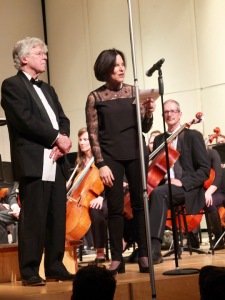
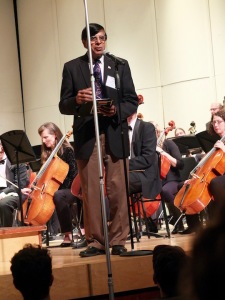

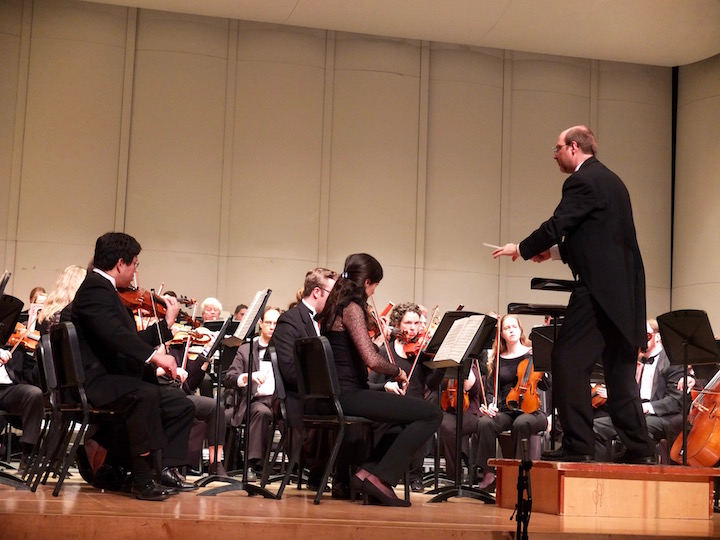





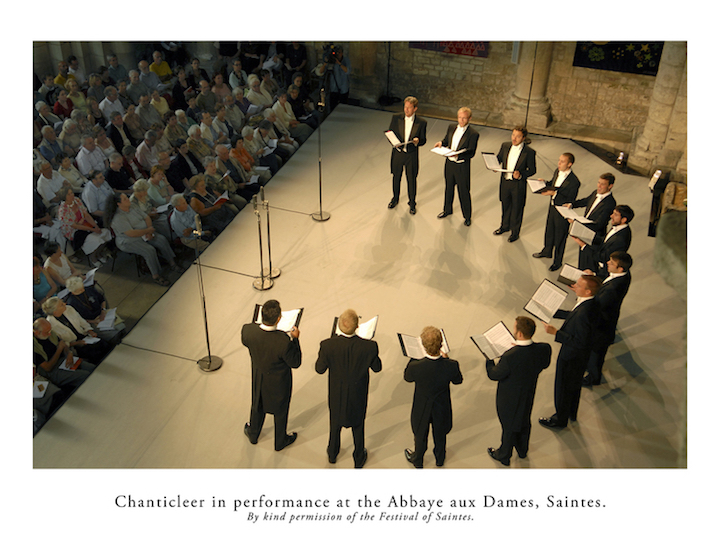
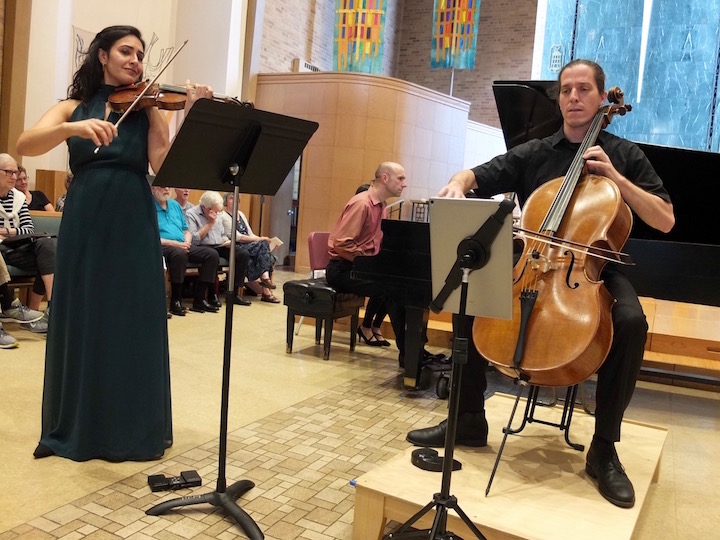
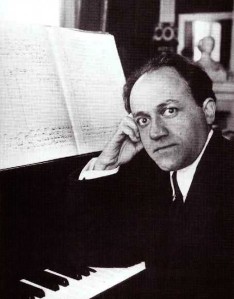











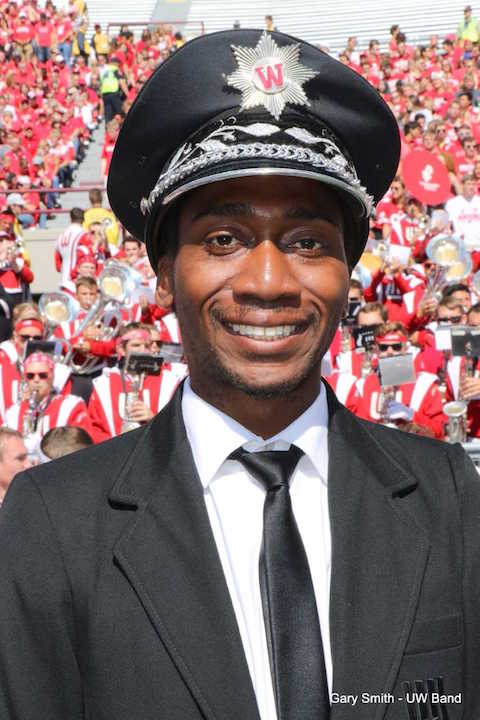


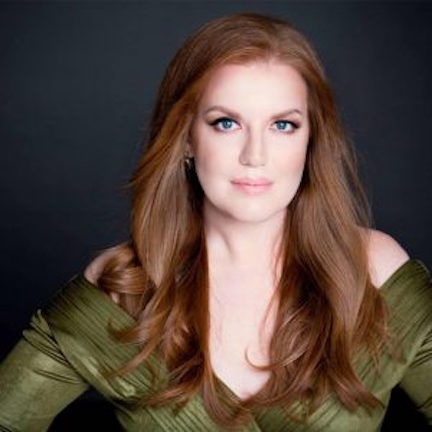
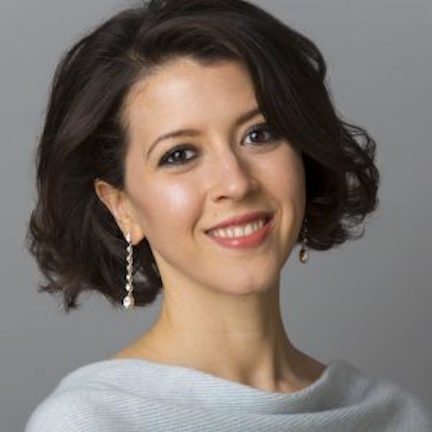
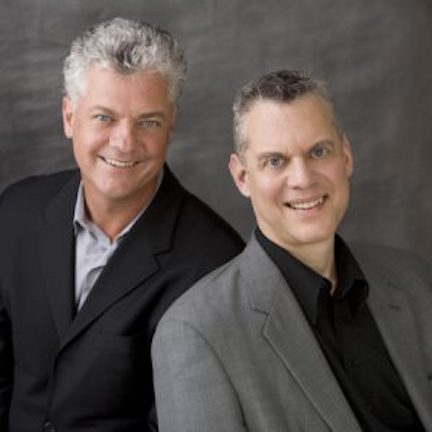
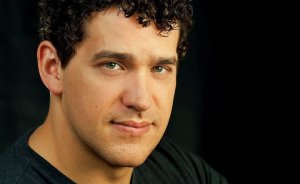


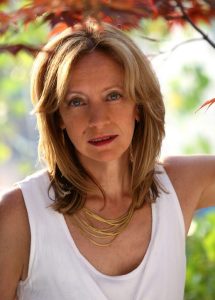
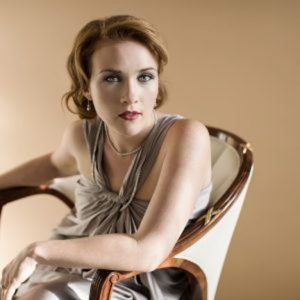
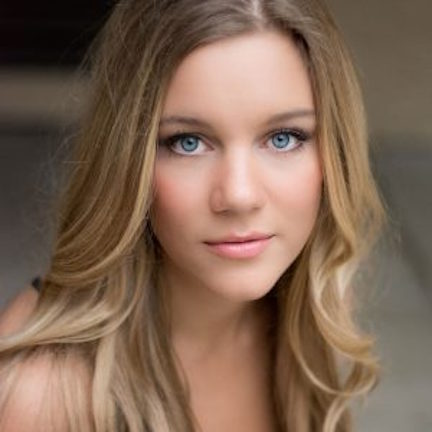
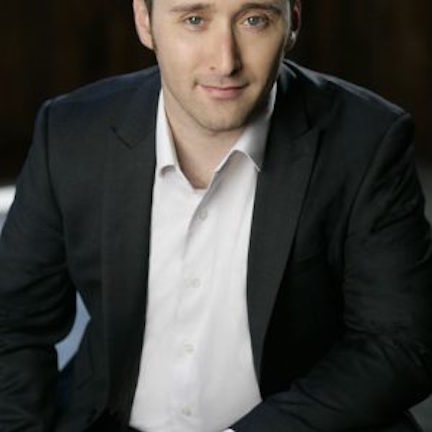
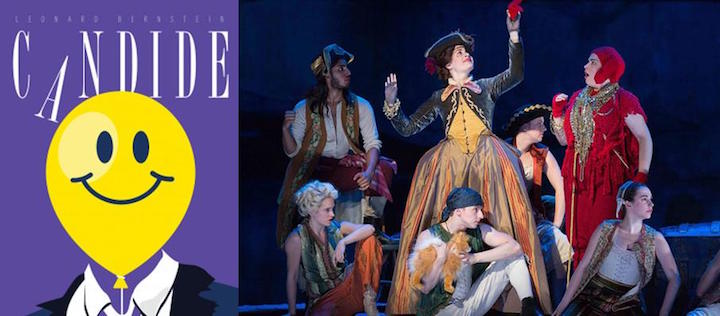
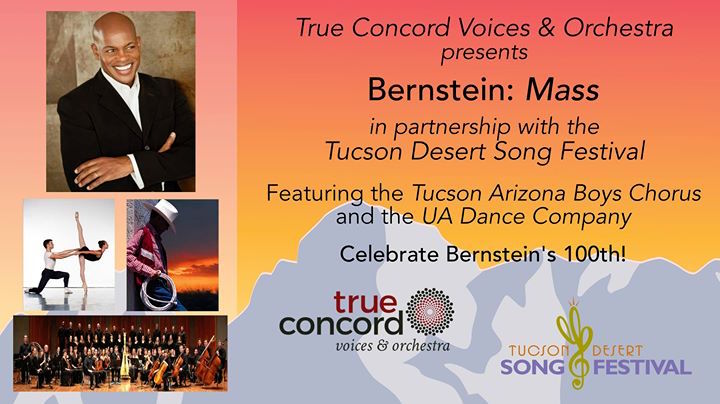
Songs by Black composers trace their cultural realities in a free online UW performance TONIGHT of “Verisimilitudes.” Plus, the five winners of this year’s Beethoven Competition perform Sunday.
Leave a Comment
PLEASE HELP THE EAR. IF YOU LIKE A CERTAIN BLOG POST, SPREAD THE WORD. FORWARD A LINK TO IT OR, SHARE IT or TAG IT (not just “Like” it) ON FACEBOOK. Performers can use the extra exposure to draw potential audience members to an event. And you might even attract new readers and subscribers to the blog.
ALERT: This Sunday, April 25, from 3:30 to 5:30 p.m. the five winners of this year’s Beethoven Competition at the UW-Madison will perform in a winners’ concert. Included in the program are the popular and dramatic “Appassionata” Sonata, Op. 57, and the famous and innovative last piano sonata, No. 32 in C minor, Op 111. Here is a link to the YouTube video: https://www.youtube.com/watch?v=eMF0Hd1MJwMg. Click on “Show More” and you can see the full programs and biographical profiles of the winners.
By Jacob Stockinger
The concert could hardly be more timely or the subject more relevant.
Think of the events in and near Minneapolis, Chicago and elsewhere in the U.S.; of the Black Lives Matter movement and social protest; of the political fight for D.C. statehood and voting rights – all provide a perfect context for an impressive student project that will debut online TONIGHT, Saturday, April 24, at 7 p.m.
The one-hour free concert “Verisimilitudes: A Journey Through Art Song in Black, Brown and Tan” originated at the UW-Madison’s Mead Witter School of Music. It seems an ideal way for listeners to turn to music and art for social and political commentary, and to understand the racial subtexts of art.
Soprano Quanda Dawnyell Johnson (below) created, chose and performs the cycle of songs by Black composers with other Black students at the UW-Madison.
Here is a link to the YouTube video: https://youtu.be/-g5hjeuSumw
Click on “Show More” to see the complete program and more information.
Here is the artist’s statement:
“Within the content of this concert are 17 art songs that depict the reality of the souls of a diasporic people. Most of the lyricists and all of the composers are of African descent. In large part they come from the U.S. but also extend to Great Britain, Guadeloupe by way of France, and Sierra Leone.
“They speak to the veracity of Black life and Black feeling. A diasporic African reality in a Classical mode that challenges while it embraces a Western European vernacular. It is using “culture” as an agent of resistance.
“I refer to verisimilitude in the plural. While syntactically incorrect, as it relates to the multiple veils of reality Black people must negotiate, it is very correct.
“To be packaged in Blackness, or should I say “non-whiteness” is to ever live in a world of spiraling modalities and twirling realities. To paraphrase the great artist, Romare Bearden, in “calling and recalling” — we turn and return, then turn again to find the place that is our self.
“I welcome you to… Verisimilitudes: A Journey Through Art Song in Black, Brown, and Tan”
Here, by sections, is the complete program and a list of performers:
I. Nascence
Clear Water — Nadine Shanti
A Child’s Grace — Coleridge-Taylor Perkinson
Night — Florence Price (below)
Big Lady Moon — Samuel Coleridge-Taylor
II. Awareness
Lovely, Dark, and Lonely — Harry T. Burleigh
Grief –William Grant Still (below)
Prayer — Leslie Adams
Interlude, The Creole Love Call — Duke Ellington
III. The Sophomore
Mae’s Rent Party, We Met By Chance –Jeraldine Saunders Herbison
The Barrier — Charles Brown
IV. Maturity
Three Dream Portraits: Minstrel Man, Dream Variation; I, Too — Margaret Bonds (below)
Dreams — Lawren Brianna Ware
Song Without Words — Charles Brown
Legacy
L’autre jour à l’ombrage (The Other Day in the Shade) — Joseph Boulogne (Chevalier de Saint-Georges, below)
The Verisimilitudes Team
Quanda Dawnyell Johnson — Soprano and Project Creator
Lawren Brianna Ware – -Pianist and Music Director
Rini Tarafder — Stage Manager
Akiwele Burayidi – Dancer
Jackson Neal – Dancer
Nathaniel Schmidt – Trumpet
Matthew Rodriguez – Clarinet
Craig Peaslee – Guitar
Aden Stier –Bass
Henry Ptacek – Drums
Dave Alcorn — Videographer
Here is a link to the complete program notes with lyrics and composer bios. And a preview audio sample is in the YouTube video at the bottom: https://simplebooklet.com/verisimilitudesprogramnotes#page=1
Share this:
Tags: #Americanhistory, #AppassionataSonata, #ArtSong, #BeethovenCompetition, #BeethovenPianoSonatas, #Blackcomposers, #BlackCulture, #BlackHistory, #Blacklife, #BlackLivesMatter, #BlackMusic, #BlackMusician, #BlogPost, #BlogPosting, #CentralTime, #ChamberMusic, #CharlesBrown, #ChevalierdeSaint-Georges, #ChicagoIllinois, #Coleridge-TaylorPerkinson, #CoronavirusPandemic, #DukeElington, #DukeEllington, #FacebookPost, #FacebookPosting, #FlorencePrice, #GreatBritain, #HarryT.Burleigh, #IrvingShain, #JacobStockinger, #JeraldineSaundersHerbison, #JosephBoulogne, #LawrenBriannaWare, #LeslieAdams, #LosAngelesGuitarQuartet, #LudwigVanBeethoven, #MargaretBonds, #MeadWitterSchoolofMusic, #MinneapolisMinnesota, #MusicDirector, #NadineShanti, #OnlineConcert, #PoliticalProtest, #ProgreamNotes, #QuandaJohnson, #RomareBearden, #SamuelColeridge-Taylor, #SierreLeone, #SingWithoutWords, #SocialProtest, #SongCycle, #SopranoSinger, #StageDirector, #TheEar, #TheU.S., #TheUK, #TheUW, #UnitedStates, #UniversityofWisconsin-Madison, #VirtualConcert, #VocalMusic, #VotingRights, #WashingtonD.C., #WesternEuropean, #WilliamGrantStill, #YouTubeChannel, #YouTubevideo, African, agent, America, Appassionata Sonata, Art, art song, Arts, audience, barrier, bass, bassist, Beethoven, Beethoven Competition, big, biography, black, Black composers, Black culture, Black life, Black Lives Matter, black music, Blackness, blog, bonds, brown, call, Central Daylight Time, Central Time, Chamber music, chance, Charles Brown, Chevalier de Saint Georges, Chicago, Child, choose, clarinet, clarinetist, Classical music, Coleridge-Taylor, Coleridge-Taylor Perkinson, commentary, Competition, complete, composer, Concert, content, context, coronavirus, correct, Creole, culture, cycle, D.C., dance, dancer, dark, day, debut, depict, descent, diaspora, dramatic, dream, Dreams, drummer, drums, Ellington, Europe, Facebook, Facebook post, Facebook posting, famous, feeling, Florence Price, forward, France, free, grace, Great Britain, Guadeloupe, guitarist, Harry T. Burleigh, History, hour, ideal, impressive, information, interlude, Irving Shain, Jacob Stockinger, Jeraldine Saunders Herbison, Joseph Boulogne, journey, journeyt, lady, Lauren Brianna Ware, legacy, Leslie Adams, life, like, link, live, Love, lovely, Ludwig van Beethoven, lyricist, lyrics, Madison, man, Margaret Bonds, maturity, Mead Witter School of Music, Minneapolis, minstrel, modality, mode, moon, multiple, Music, Music director, Musician, Nadine Shanti, nascence, night, online, originate, other, package, pandemic, party, People, percussion, perfect, perform, performer, Pianist, Piano, Piano sonata, plural, political protest, popular, portrait, post, posting, prayer, preview, price, program, program notes, project, Quanda Johnson, racial, read, reality, recall, recital, Rent, resistance, right, Romare Bearden, sample, Samuel Coleridge-Taylor, shade, share, show, Sierra Leone, singer, Singing, social protest, Sonata, song, song cycle, Song Without Words, sophomore, soprano, soul, speak, spiral, stage director, statehood, statement, Still, students, subtext, syntax, tag, Tan, team, The Ear, tonight, Trumpet, trumpeter, U.S., UK, understand, United States, University of Wisconsin-Madison School of Music, University of Wisconsin–Madison, UW, UW-Madison, veil, veracity, verisimilitude, vernacular, videographer, virtual, vocal music, voting, voting rights, Washington, water, way, Western European, whiteness, William Grant Still, winner, Wisconsin, year, YouTube, YouTube video